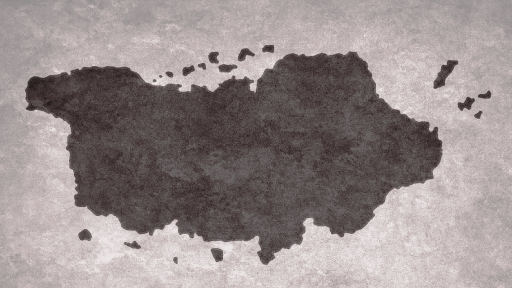The technology of Malplenan is loosely based off of 1,000 - 1,500 AD in our world. Due to limited communication and transportation technology, overall technological advancement varies widely across the continent. The below is a series of categories of technology with brief descriptions of what you can expect to find.
Seafaring
Since there are very few islands around the continent, and no ocean divides, seafaring technology is minimal. Basic galleys is what is commonly found. Slightly more advanced galleys can be found off of the north and east coasts of the
Ardada Empire due to the islands. Compasses are very rare.
River faring vessels and shallow water ocean vessels are very common around the continent and river travel is one of the more common ways to travel the world and transport goods for trade. Smaller canal networks are common in a few places throughout the world and a couple larger canals that connect the north and south oceans exist. Animal powered boats, either via swimming, oars or walking on land next to the river are common.
Communication
Paper is common and cheap around the world, made from recycled textiles. However, the use of paper (Eg, writing or copying books) is still very labour intensive. Some books just aren't copied much while some few are very common.
Long distance communication is mostly made up of runners, mail, signal towers, etc.
Farming
Metal tools are widespread. Hand, harness and mouth controlled. Water and wind mills are very common. Knowledge about crop nutrition and rotation is varied. Most countries have a strong knowledge of three field crop rotation systems but a few places still only use a two field system. There are rare locations that use a four field system. However, crop seeds and trade and knowledge sharing is fairly common where trade is common.
A common rule of thumb is that 4 sq km of aerable land can feed a city of 100 plus the 300 farmers required to farm that land.
Military
Castle fortifications are common where they can be afforded. This has made siege warfare prominent with defenders having a very strong advantage. Pitched battles are really rare in these locations. Some locations can't afford castles and still rely on pitched battles or hit and run tactics in the field.
Common troops are light and heavy infantry, cavalry and air forces, artillery, foot and mounted archers. Steel weapons are common, but the quality of steel depends on the knowledge of the location manufacturers. Mounts used differ depending on what animals exist in the region and air forces are only where bird races exist. The type of weapons that exist also greatly depend on the races that are common to that region.
Training and tactical knowledge is highly variable, even across neighbouring regions, depending on how strong the military culture and education systems are like. Mercenary groups are also common to find in a number of areas, especially those that are more commonly war-torn. The use of supply trains during a campaign are very rare and it is more common to see the armies loot the land to survive.
Navy forces are uncommon as the majority of the continent is landlocked. However, for those places on the coast, it is common to see strong navies in the north east and south west of the continent since the natural direction of the wind gives those nations a strong advantage.
Gunpowder is somewhat known about, but uncommon to see. However, its use is very unrefined. Crude bombs are the most common use for it. Anything more advanced (eg, artillery, guns) are extremely and depend heavily on the level of steel manufacturing and ingenuity of the local inventors.
Resources
Steel is common across the continent, but its quality is really varied.
Salt, metal ores, clay, wood, coal, precious metals and stone are all common resources extracted. Most of these use some form of surface mining to extract the resource (strip mining, open pit mining, etc). These are most commonly setup next to rivers to help transport the goods and provide a source of power for initial processing. However, since it is not well understood how to find these materials, mines are often made wherever the material is found.
There are some rare tunnel mines, but the conditions are very dangerous and the dangers are not well understood.
Trees are cut with saws and axes, then normally refined nearby using sawmills. The quality of the sawmills varies from crude hand and crank powered devices to hydropowered mills. Stone cutting uses similar techniques for initial cuts, but will also use water cutting and abrasion methods.
Solid fuel is the most common type. Wood, coal, peat and dung based on the region. Liquid fuels are known, but hard to extract and transport, so are only used where convenient. Gas fuel is very rare and not well understood. This is more commonly used by random chance, where natural seepage breaks the surface.
Infrastructure
Roads are fairly common and becoming more common across the continent. In locations where roads are rare or don't exist, tracks and path are found instead. Carts, carriages and other animal powered wheel vehicles are very common.
Cities are everywhere and are usually surrounded by stone walls. Aquaducts and sewer systems exist and are generally high quality in the larger cities, but hit and miss in the smaller cities. Because of how expensive the critical infrastructure is to allow larger cities, larger cities are rare.
Bridges are very common across major rivers. However, most of the knowledge on building larger bridges is hoarded by the
Enàkwehigàdag Guild. Tunnels are uncommon, especially through larger mountains.
Economy
Currency is almost everywhere. Travelling merchants are the most common form of trade and banking, but some central banks do exist.



Comments